Tea Saponins
Tea Saponins are extracted from Tea leaves. Stanford Chemicals has been providing quality Tea Saponins and many other natural plant extracts for over 25 years.
SKU HE3137
Category Botanical Ingredient
Tea Saponins Safety Tips
Handling of Tea Saponins should only be performed by personnel trained and familiar with handling potent active pharmaceutical ingredients. Moderate to severe irritant to the skin and eyes.
References
- 1. The activity of mate saponins (Ilex paraguariensis) in intra-abdominal and epididymal fat, and glucose oxidation in male Wistar rats.
Resende PE, Verza SG, Kaiser S, Gomes LF, Kucharski LC, Ortega GG.J Ethnopharmacol. 2012 Dec 18;144(3):735-40. doi: 10.1016/j.jep.2012.10.023. Epub 2012 Oct 23. - 2. UDP-Glycosyltransferases from the UGT73C Subfamily in Barbarea vulgaris Catalyze Sapogenin 3-O-Glucosylation in Saponin-Mediated Insect Resistance.
Augustin JM, Drok S, Shinoda T, Sanmiya K, Nielsen JK, Khakimov B, Olsen CE, Hansen EH, Kuzina V, Ekstrøm CT, Hauser T, Bak S.Plant Physiol. 2012 Dec;160(4):1881-95. doi: 10.1104/pp.112.202747. Epub 2012 Oct 1. - 3. Medicinal flowers. XXXIII. Anti-hyperlipidemic and anti-hyperglycemic effects of chakasaponins I-III and structure of chakasaponin IV from flower buds of Chinese tea plant (Camellia sinensis).
Matsuda H, Hamao M, Nakamura S, Kon’i H, Murata M, Yoshikawa M.Chem Pharm Bull (Tokyo). 2012;60(5):674-80. - 4. Quantitative analysis of five kudinosides in the large-leaved Kudingcha and related species from the genus Ilex by UPLC-ELSD.
Li L, Peng Y, Ma G, He C, Feng Y, Lei Q, Xiao P.Phytochem Anal. 2012 Nov-Dec;23(6):677-83. doi: 10.1002/pca.2372. Epub 2012 May 17. - 5. Modification of ginseng flavors by bitter compounds found in chocolate and coffee.
Sook Chung H, Lee SY.J Food Sci. 2012 Jun;77(6):S202-10. doi: 10.1111/j.1750-3841.2012.02716.x. Epub 2012 May 16. - 6. The Synergistic Apoptotic Interaction of Panaxadiol and Epigallocatechin Gallate in Human Colorectal Cancer Cells.
Du GJ, Wang CZ, Qi LW, Zhang ZY, Calway T, He TC, Du W, Yuan CS.Phytother Res. 2012 May 8. doi: 10.1002/ptr.4707. [Epub ahead of print] - 7. In vitro color change of three dental veneering resins in tea, coffee and tamarind extracts.
Subramanya JK, Muttagi S.J Dent (Tehran). 2011 Summer;8(3):138-45. Epub 2011 Sep 30. - 8. Procoagulant and prothrombotic effects of the herbal medicine, Dipsacus asper and its active ingredient, dipsacus saponin C, on human platelets.
Song JS, Lim KM, Kang S, Noh JY, Kim K, Bae ON, Chung JH.J Thromb Haemost. 2012 May;10(5):895-906. doi: 10.1111/j.1538-7836.2012.04685.x. - 9. Quantitative analysis of acylated oleanane-type triterpene saponins, chakasaponins I-III and floratheasaponins A-F, in the flower buds of Camellia sinensis from different regional origins.
Morikawa T, Miyake S, Miki Y, Ninomiya K, Yoshikawa M, Muraoka O.J Nat Med. 2012 Oct;66(4):608-13. doi: 10.1007/s11418-012-0627-1. Epub 2012 Feb 4. - 10. Analysis of Camellia sinensis green and black teas via ultra high performance liquid chromatography assisted by liquid-liquid partition and two-dimensional liquid chromatography (size exclusion × reversed phase).
Scoparo CT, de Souza LM, Dartora N, Sassaki GL, Gorin PA, Iacomini M.J Chromatogr A. 2012 Jan 27;1222:29-37. doi: 10.1016/j.chroma.2011.11.038. Epub 2011 Nov 25. - 11. Aqueous fraction from Costus spiralis (Jacq.) Roscoe leaf reduces contractility by impairing the calcium inward current in the mammalian myocardium.
Britto RM, Santos AL, Cruz JS, Gondim AN, Lauton-Santos S, Lara A, Guatimosim S, Vasconcelos CM, Estevam Cdos S, Dias AS, Oliveira ED, Lima AK, Souza RC, Conde-Garcia EA.J Ethnopharmacol. 2011 Nov 18;138(2):382-9. doi: 10.1016/j.jep.2011.09.013. Epub 2011 Sep 22. - 12. Effects of tea saponins on rumen microbiota, rumen fermentation, methane production and growth performance–a review.
Wang JK, Ye JA, Liu JX.Trop Anim Health Prod. 2012 Apr;44(4):697-706. doi: 10.1007/s11250-011-9960-8. Epub 2011 Aug 26. Review. - 13. Tea triterpenoidal saponins from the roots of Camellia sinensis have inhibitory effects against alcohol dehydrogenase.
Varughese T, Manir MM, Rahaman M, Kim JK, Lee BG, Moon SS.Planta Med. 2011 Dec;77(18):2029-36. doi: 10.1055/s-0031-1280024. Epub 2011 Jul 22. - 14. Apolipophorin III and transmission electron microscopy as toxicity indicators for harmaline and tea saponin in Spodoptera exigua (Noctuidae: Lepidoptera).
Rizwan-ul-Haq M, Gong L, Hu M, Luo J.Chemosphere. 2011 Oct;85(6):995-1001. doi: 10.1016/j.chemosphere.2011.06.089. Epub 2011 Jul 23. - 15. Effects of ginsenoside on large-conductance K(Ca) channels in human corporal smooth muscle cells.
Sung HH, Chae MR, So I, Jeon JH, Park JK, Lee SW.Int J Impot Res. 2011 Sep-Oct;23(5):193-9. doi: 10.1038/ijir.2011.25. Epub 2011 Jun 23. - 16. Synergism and foaming properties in binary mixtures of a biosurfactant derived from Camellia oleifera Abel and synthetic surfactants.
Jian HL, Liao XX, Zhu LW, Zhang WM, Jiang JX.J Colloid Interface Sci. 2011 Jul 15;359(2):487-92. doi: 10.1016/j.jcis.2011.04.038. Epub 2011 Apr 18. - 17. Natural inhibitors of pancreatic lipase as new players in obesity treatment.
de la Garza AL, Milagro FI, Boque N, Campión J, Martínez JA.Planta Med. 2011 May;77(8):773-85. doi: 10.1055/s-0030-1270924. Epub 2011 Mar 16. Review. - 18. Ginsenoside Rg3 enhances large conductance Ca2+-activated potassium channel currents: a role of Tyr360 residue.
Choi SH, Shin TJ, Lee BH, Hwang SH, Lee SM, Lee BC, Park CS, Ha TS, Nah SY.Mol Cells. 2011 Feb;31(2):133-40. doi: 10.1007/s10059-011-0017-7. Epub 2010 Dec 22. - 19. Effect of biosurfactants on laccase production and phenol biodegradation in solid-state fermentation.
Zhou MF, Yuan XZ, Zhong H, Liu ZF, Li H, Jiang LL, Zeng GM.Appl Biochem Biotechnol. 2011 May;164(1):103-14. doi: 10.1007/s12010-010-9118-6. Epub 2010 Oct 31. - 20. Sensory profile of a model energy drink with varying levels of functional ingredients-caffeine, ginseng, and taurine.
Tamamoto LC, Schmidt SJ, Lee SY.J Food Sci. 2010 Aug 1;75(6):S271-8. doi: 10.1111/j.1750-3841.2010.01655.x.
Details
| Product Name | Tea Saponins |
|---|---|
| CAS No. | 8047-15-2 |
| Molecular Formula | C27H42O3 |
| Molecular Weight | 1200 |
| Purity | 60%-95%UV |
| Package | 25 kg/drum |
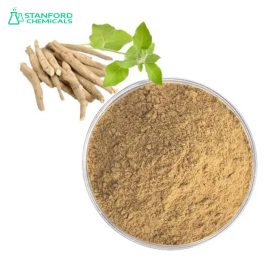
| Product Name | Astilbin |
|---|---|
| CAS No. | 29838-67-3 |
| Molecular Formula | C21H22O11 |
| Molecular Weight | 450.4 |
| Purity | 20%-90% HPLC |
| Package | 25 kg/drum |
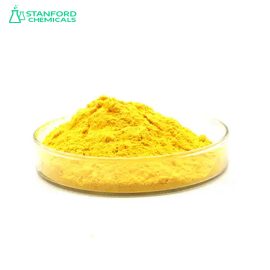
| Product Name | Berberine |
|---|---|
| CAS No. | 2086-83-1 |
| Molecular Formula | C20H18NO4 |
| Molecular Weight | 336.37 |
| Purity | 98% HPLC |
| Package | 25 kg/drum |
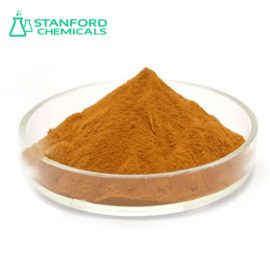
| Product Name | 1-Deoxynojirimycin |
|---|---|
| CAS No. | 19130-96-2 |
| Molecular Formula | C6H13NO4 |
| Molecular Weight | 163.17 |
| Purity | 1%-20% HPLC |
| Package | 25 kg/drum |
Be the first to review “Tea Saponins” Cancel reply

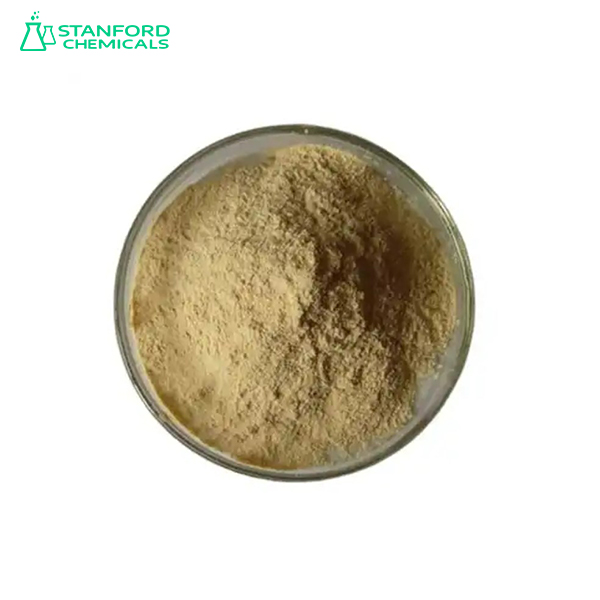
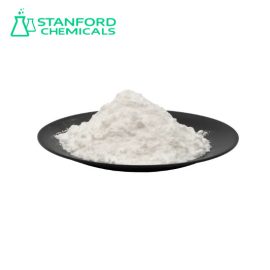
Reviews
There are no reviews yet.